Gloriously bright and vibrant, this Turmeric Rice Pilaf is perfectly fluffy and packs a lot of flavour. Nutritious and quick to make, it’s the perfect side dish to serve on any night of the week, but also very company-worthy.
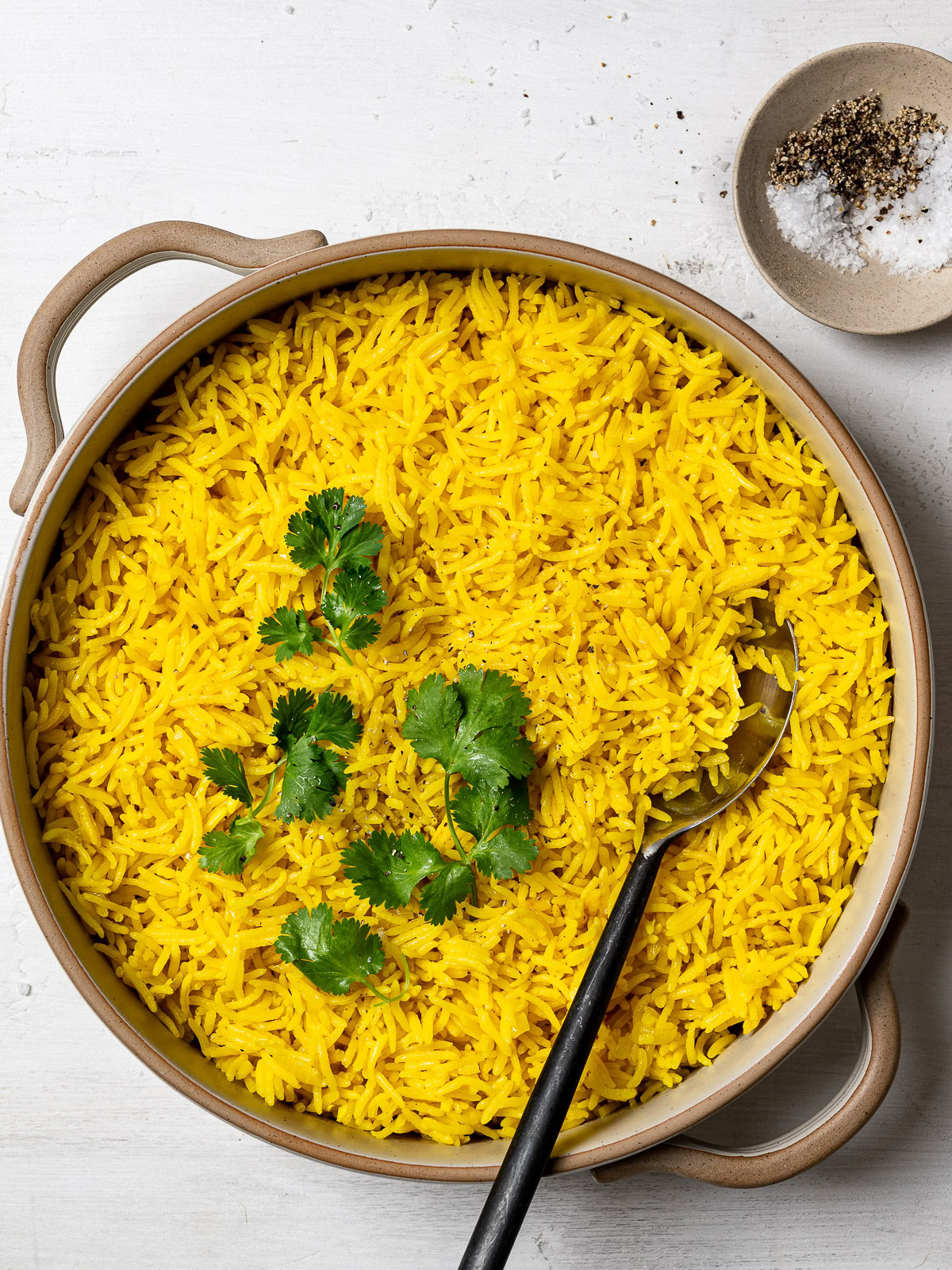
Plain white rice never gets old for me but this bright, sunny-yellow, turmeric rice dish is bringing in a much-needed bit of spring into my kitchen. Here, fragrant basmati rice is cooked using the pilaf-method of first toasting it in some fat with onion and garlic before adding the broth. I often use achiote-infused oil to give rice a bright yellow colour, but turmeric is more widely available so that is what we use here.
This is an easy way to add some variety, flavour, and colour to your rice, and it turns out gorgeous and fluffy every time. The sweet-savoury aroma wafting through the house while the rice is cooking, immediately brings me joy. I think it will do the same for you.
Key Ingredients And Notes
You likely stock all these ingredients in your pantry which means you can make this delicious turmeric rice pilaf any time the craving hits. Here’s the simple list of ingredients you will need:
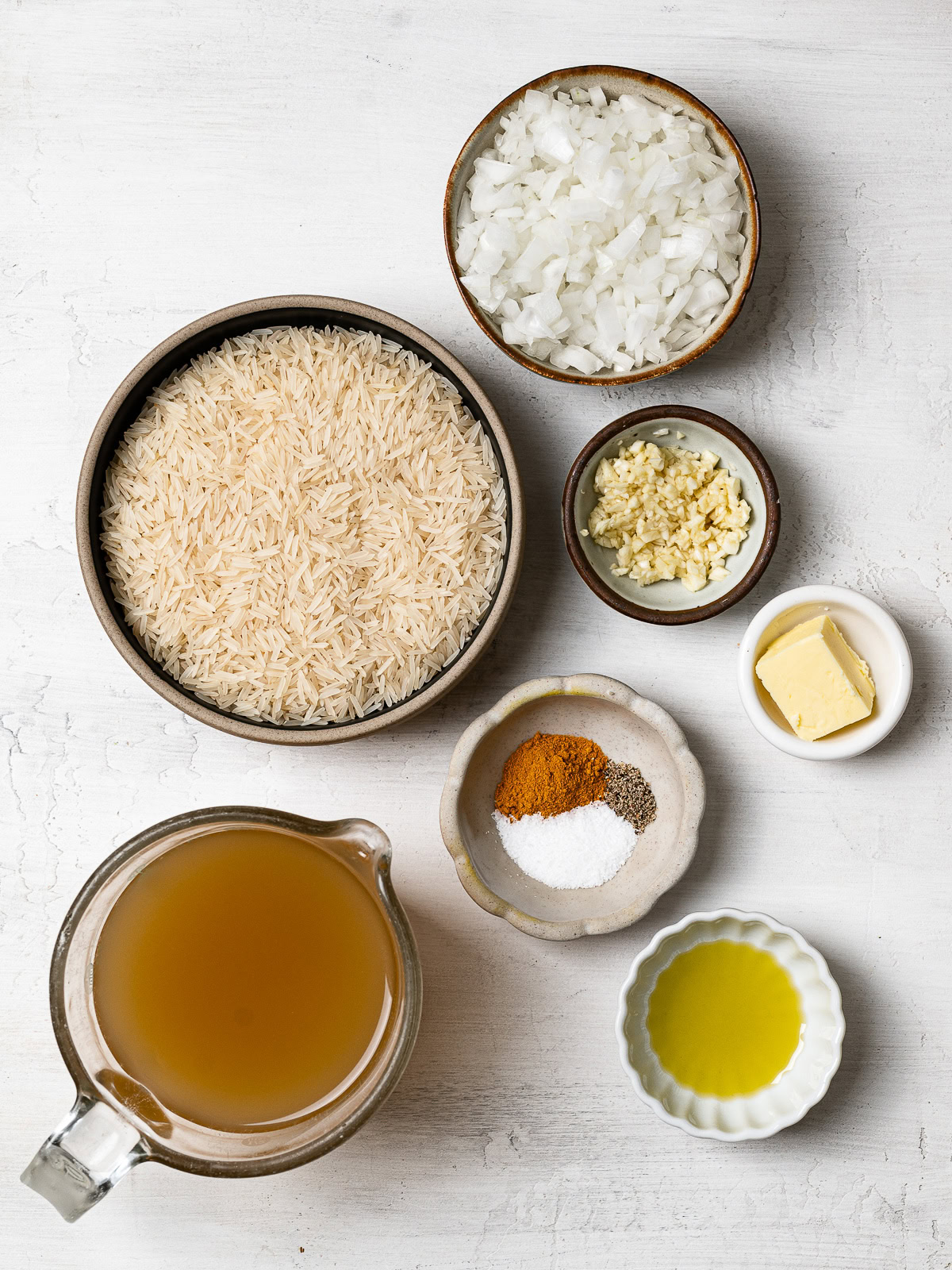
- Basmati rice – Fragrant basmati rice is my favourite rice to use here. You can use any long grain rice but you will have to adjust the water and cooking time accordingly.
- Olive oil and butter – Pilaf-style rice requires toasting the rice in hot butter or oil before steaming it on the stovetop with aromatics and broth. You can use all butter, ghee or olive or a mix of butter and oil which is what I usually do if I don’t have ghee.
- Onion and garlic – These are the aromatics we use to add lovely flavour to out turmeric rice.
- Turmeric – Used widely throughout Asia and an essential spice in Indian cooking, turmeric is made from the ground root of the turmeric plant (which is related to ginger). Turmeric tastes warm and earthy but is not spicy.
- Low-sodium chicken broth – To add more depth of flavour, I mostly use chicken broth when making any variety of rice pilaf. If vegan or vegetarian, you can use water instead or a light-handed, veggie bouillon-based broth.
- Bay leaf – Not essential but I love the floral fragrance a bay leaf adds to rice and this turmeric rice is no exception. I missed adding it to the ingredient photo above, but I did add it to the rice.
- Salt and pepper – Salt will of course help make the rice very flavourful. The belief that your body will not absorb turmeric properly unless combined with black pepper, has long been disputed, and mostly dispelled. However, some research does show turmeric with black pepper will most likely absorb faster than turmeric by itself and may stay in the blood stream longer. So I add a little bit just in case 🙂 If you’re sensitive to pepper, or find it out of place in your rice, feel free leave it out.
Note: The complete list of ingredients and amounts can be found in the recipe card below.
Variations
I wanted to keep this rice simple and unadorned. A riff on arroz amarillo (yellow rice) found all throughout Latin America. But feel free to use any add-ins or garnishes you’d like. Here’s. few great ones you might like:
- Add warming spices: To give it a more decidedly Indian flavour, cook the rice with a stick of cinnamon, 1 star anise, and/or a few cloves. Cardamom seeds would also be delicious.
- Top with more garishes: Toasted almonds, pine nuts, dried cranberries, would all be great here.
- Add vegetables: Sauté some finely chopped carrots with the onion and garlic. stir in some frozen peas once the rice has finished cooking and let sit, covered, for 10 minutes.
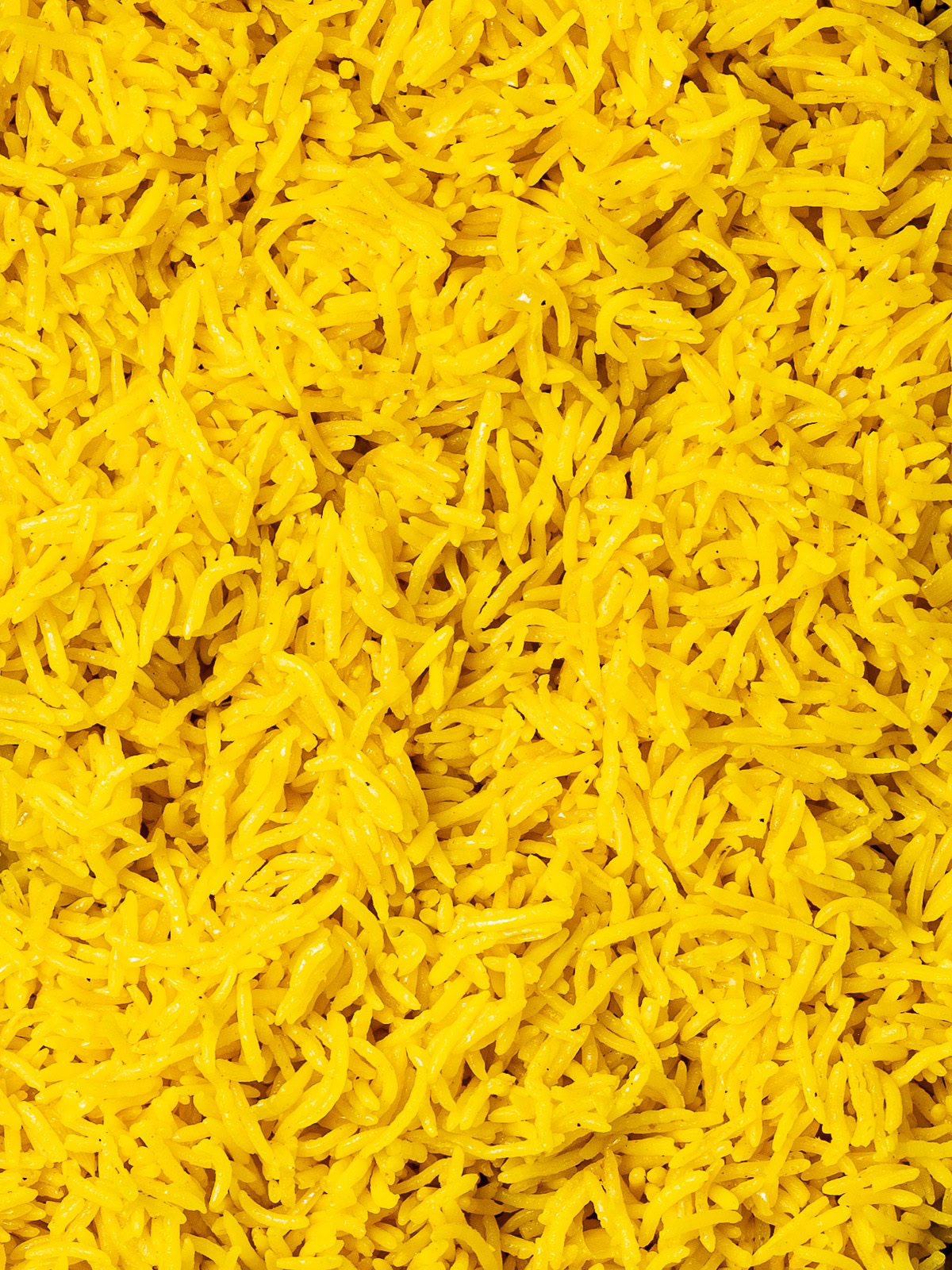
How To Soak Basmati Rice
Soaking basmati rice is not essential. Unlike some rice varieties, such as wild rice, that take really long to cook unless soaked for about 1 hour, basmati will cook perfectly whether soaked or not.
However, if at all possible, I always recommend you soak basmati rice for at least 30 minutes which will cause the grains of rice expand to almost 3/4 inches. This is because the soaking process allows the rice to absorb moisture and relax before cooking. If you’re pressed for time, soak the rice in hot water for a mere 10 minutes which will soften its outer coating and let it absorb water quickly.
How To Rinse Basmati Rice
While soaking basmati rice is not essential, rinsing it is. Rinsing the rice washes away excess starch which helps keep the grains from clumping together once cooked. If you want beautiful separated grains, give your rice a quick rinse.
In this post, you can find step-by-step photos on how to rinse any variety of rice. Here is the written method:
- Place rice in a medium bowl (I like to use a 4 cup measuring cup) and fill with cool water from the tap. Turn off the water and swish the grains around with your hand as though you were washing them. Pour out the starchy water as best you can without spilling any rice. Fill with water again and repeat until the water is much clearer, about 4 times total. Note that the water does not have to be crystal clear.
- Drain the water and rice in a fine mesh strainer then set the strainer (with the rice still in it) over a bowl and let drain any remaining water for 1 minute or so.
How To Make Turmeric Rice Pilaf
If possible, soak the rice for 30 minutes before cooking it (see section above). For the fluffiest turmeric rice pilaf, the ratio of water to rice you use when cooking it is pretty crucial. Instead of a ratio of 1:2 for rice and water, here I like to use 1 1/2 cup water for every cup of rice.
Rinse the rice until water runs almost clear (see section above). Drain well.
Melt the butter and olive oil in a medium-size deep skillet with a tight-fitting lid over medium heat. Add the onion and cook, stirring regularly, until softened but not browned, about 4 minutes. Stir in the garlic and cook until fragrant, about 1 minute more.
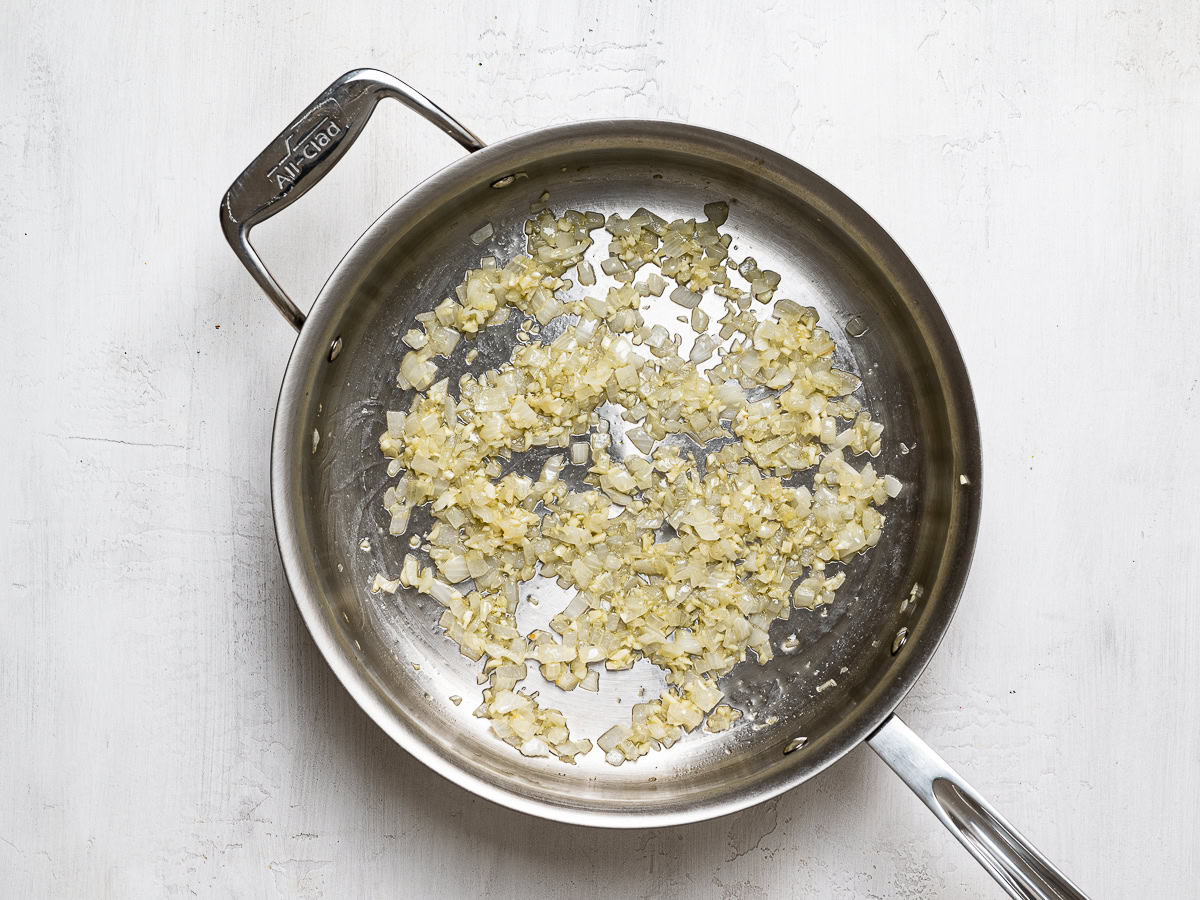
Add the rice, turmeric, salt and pepper to the pan. Cook, stirring constantly, until all the grains are completely coated in oil and looking a little toasty, about 2 minutes.
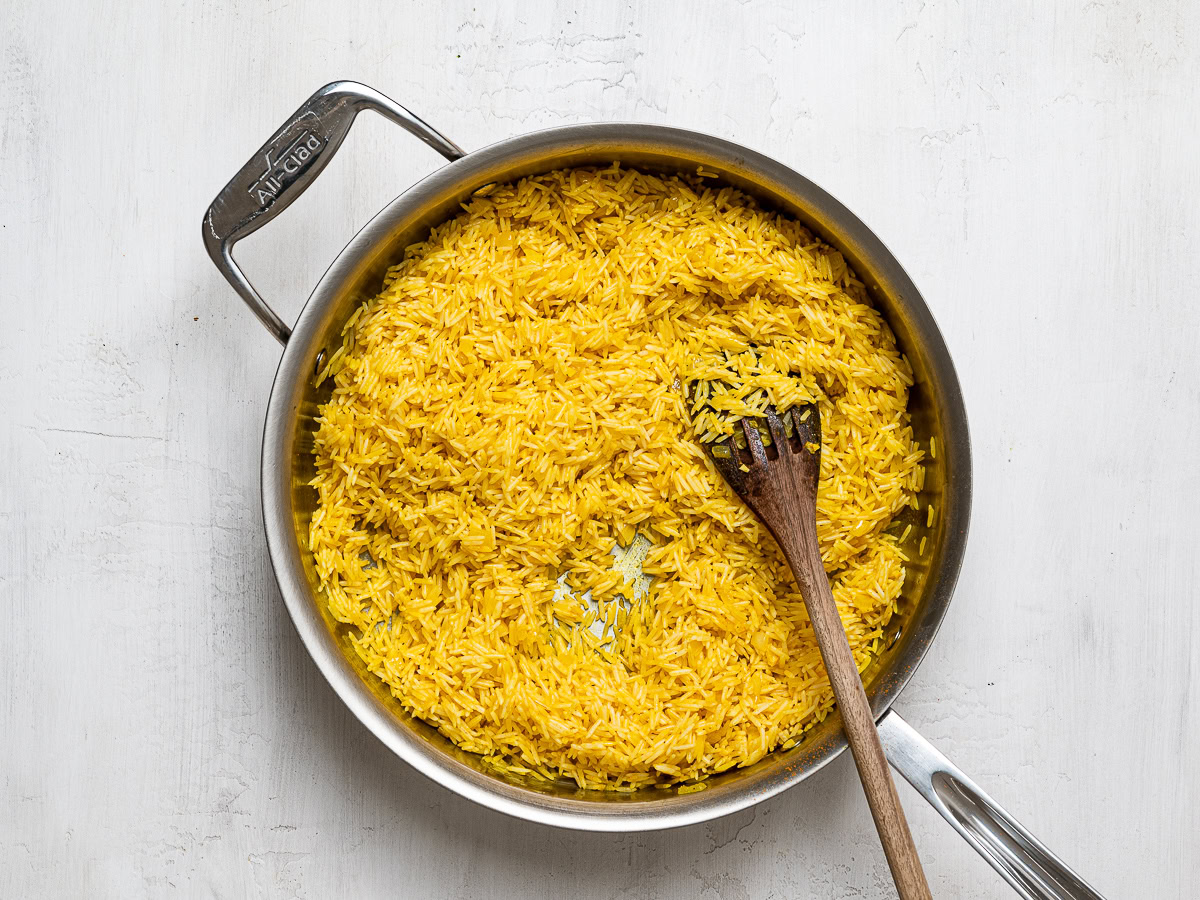
Add the broth and bay leaf and bring to a boil. Reduce heat to very low, cover, and let cook undisturbed 15 minutes. Remove from the heat, leaving the lid on, and let rest 10 minutes (no peeking!).
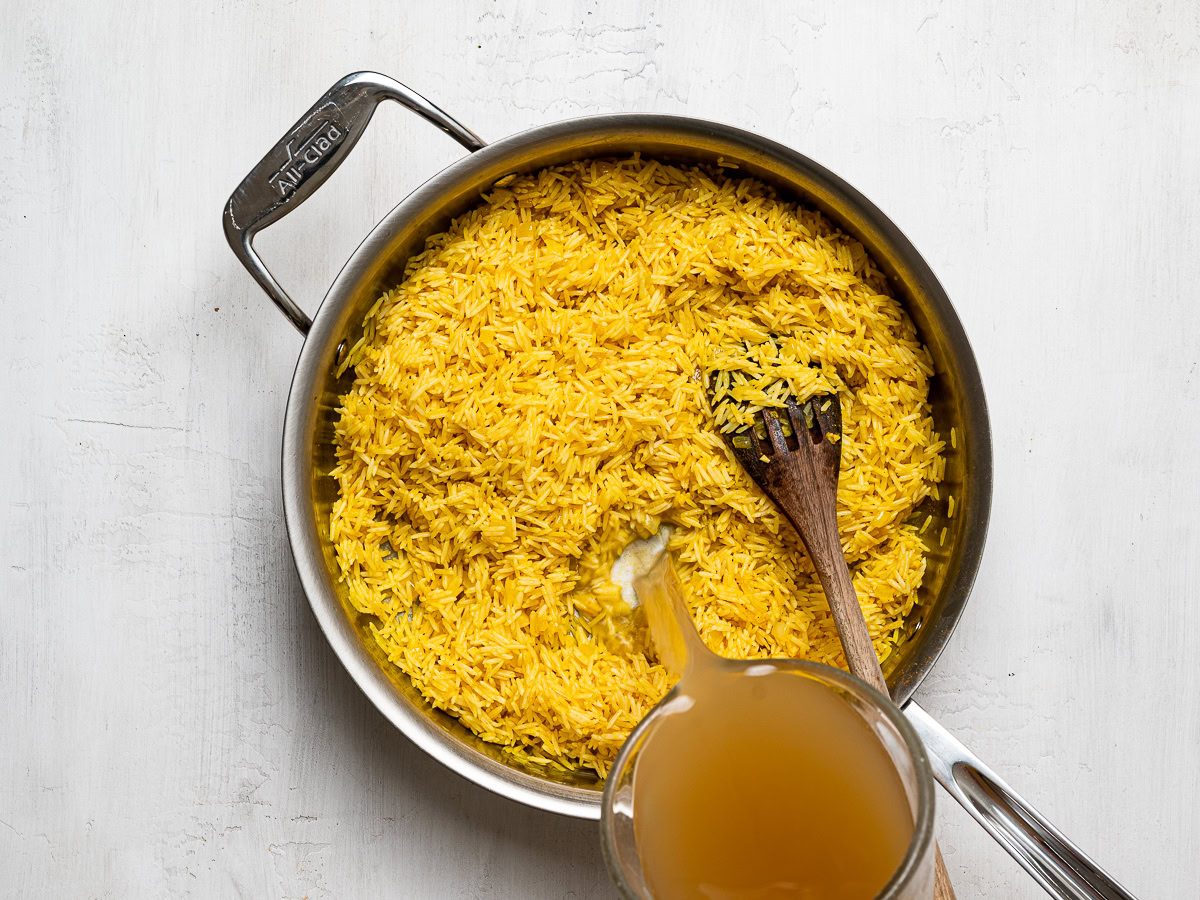
Remove lid and and use a large fork to gently fluff rice. Garnish with chopped cilantro, if using, and serve immediately.
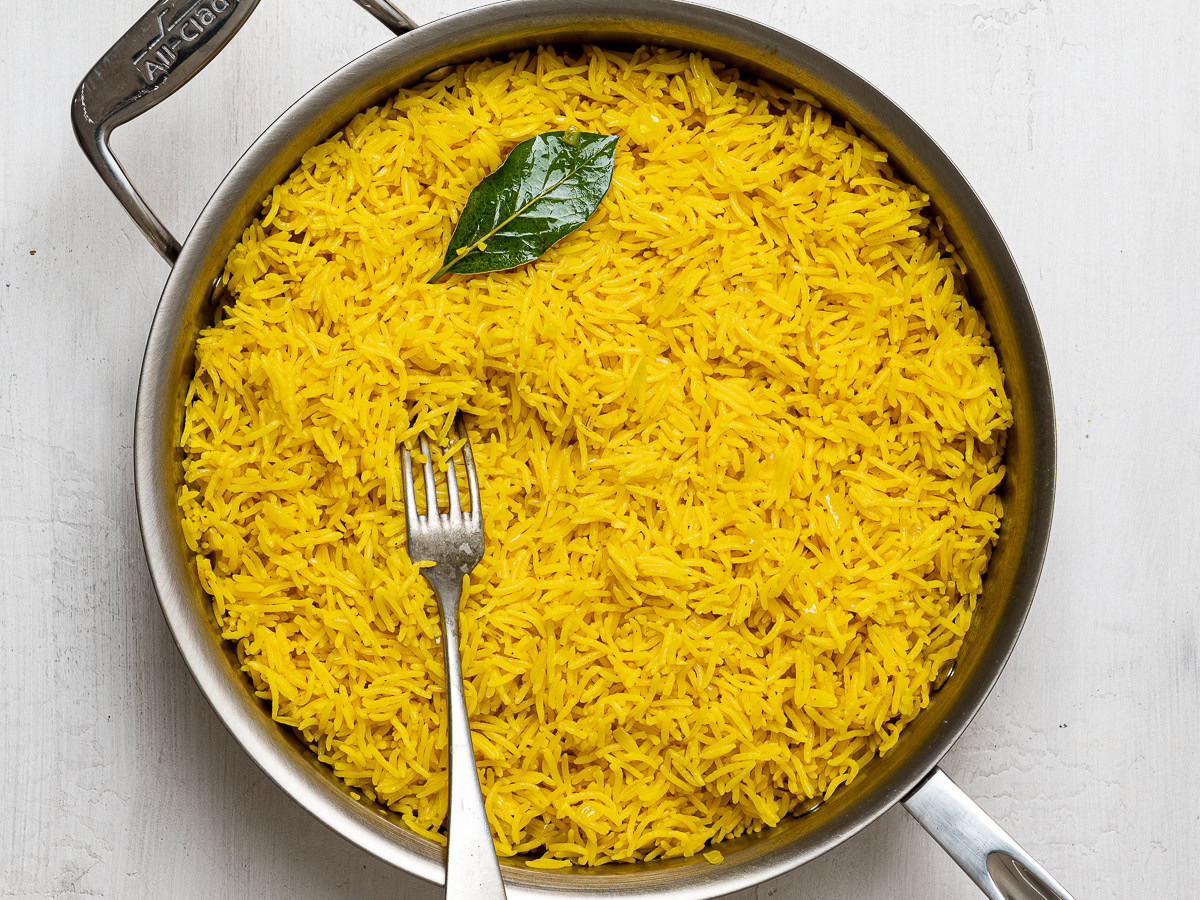
Tips
- Don’t add too much turmeric. A little goes a long way with ground turmeric because the flavour can be quite bold. I like to add about 1 teaspoon for 1 1/2 cups of rice. Add much more than that, and the taste could be too strong.
- Use an Indian basmati rice. Using Basmati rice from India which has long grains and a beautiful aroma will ensure this dish is a complete success.
- Soak the rice. Though not essential, soaking the rice for at least half an hour (or up to overnight) before cooking it will make it extra light and fluffy.
Frequently Asked Questions
Turmeric is derived from the curcuma longa plant, the same family of plants as ginger. Native to India and Southeast Asia, the roots (or rhizomes) have been cultivated for thousands of years and is now used both raw and dried in cuisines all over the world. In its raw form, it looks like a smaller, carrot-orange coloured piece of ginger. Once dried and powdered, it becomes a very deep yellow-orange colour.
In both its raw and dried form, turmeric is a natural food dye giving a brilliantly yellow-orange colour to everything it comes into contact with. Though it is now easier to find turmeric root at most well-stocked supermarkets, dried turmeric is more readily available and lasts longer.
Turmeric has a bitter, earthy taste laced with a mild peppercorn heat that some may describe as spicy. When added to food in small amounts, or combined with aromatics or sweeter ingredients, its bold flavour is balanced out and the end result is lovely.
Yes, you can use Jasmine rice, brown rice, or regular long grain white rice. Just make sure you follow the package instructions for water amounts and cooking time.
Turmeric is high in anti-oxidant properties which prove beneficial when consumed through supplements. The research, however, is a little inconclusive on exactly how beneficial it is, or whether consuming turmeric that is in food, is as beneficial as some wellness enthusiasts tout it to be. The teaspoon we use in this turmeric rice pilaf is definitely not enough to make it any more healthy than a plain rice dish. That said, it taste delicious, looks beautiful, and it certainly doesn’t hurt you.
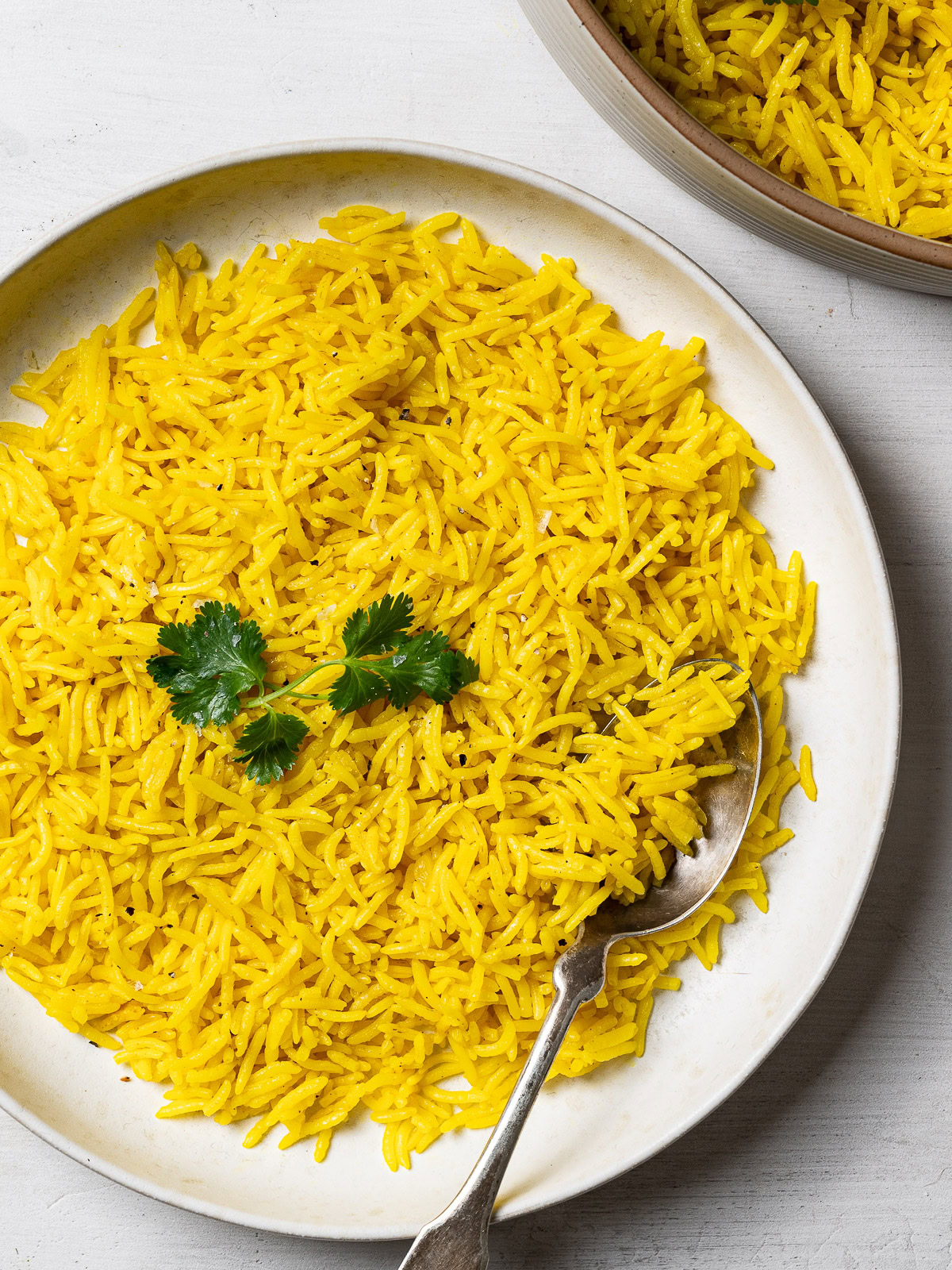
Serving Suggestions
Though fragrant and delicious, this turmeric rice pilaf has a mild flavour which means it can be accompanied with just about anything. Try it with tofu, roasted veggies, stewed beans, white fish, salmon, oven-baked chicken breasts, or these saucy chicken thighs.
Recently, I tucked the leftovers into these burritos for lunch and they were outstanding.
Storing Suggestions
Like most rice dishes, this turmeric rice pilaf is great for meal prep so feel free to make a double batch to use throughout the week.
- To store: Store the yellow rice in the fridge in an airtight container for up to 4 days.
- To reheat: For best results I like to reheat the rice on the stovetop. Add a few splashes of water or broth to a skillet and reheat rice over medium heat, covered, until warmed through.
More Rice Recipes To Try
- One-pot Rice and Beans
- Wild Rice Citrus Salad with Persimmons
- Moro de Habichuelas Negras (One-pot Rice and Beans)
- Persian-style Jeweled Rice
***If you give this Turmeric Rice Pilaf recipe a try, please feel free to leave a comment and/or a star rating below. We appreciate and welcome all your feedback. Thank you!
Turmeric Rice Pilaf

Ingredients
- 1 tablespoon unsalted butter or ghee or coconut oil
- 1 tablespoon olive oil or coconut oil or use all butter
- 1 medium onion finely diced
- 4 cloves garlic minced
- 1 1/2 cups 295g basmati rice or your choice of long-grain rice, rinsed and drained (see notes)
- 1 teaspoon turmeric powder
- 1/2 tsp salt or a pinch more to taste
- 1/4 tsp black pepper or to taste
- 2 1/4 cups low-sodium chicken stock or vegetable stock
- 1 bay leaf
- chopped cilantro for garnish optional
Instructions
- Melt the butter and olive oil in a medium-size deep skillet with a tight-fitting lid over medium heat. Add the onion and cook, stirring regularly, until softened but not browned, about 4 minutes. Stir in the garlic and cook until fragrant, about 1 minute more.
- Add the rice, turmeric, salt and pepper to the pan. Cook, stirring constantly, until all the grains are completely coated in oil and looking a little toasty, about 2 minutes. Add the broth and bay leaf and bring to a boil. Reduce heat to very low, cover, and let cook undisturbed 15 minutes. Remove from the heat, leaving the lid on, and let rest 10 minutes (no peeking!).
- Remove lid, discard bay leaf and use a large fork to gently fluff rice. Garnish with chopped cilantro, if using, and serve immediately.
Notes
- Place rice in a medium bowl (I like to use a 4 cup measuring cup) and fill with cool water from the tap. Turn off the water and swish the grains around with your hand as though you were washing them. Pour out the starchy water as best you can without spilling any rice. Fill with water again and repeat until the water is much clearer, about 4 times total. Note that the water does not have to be crystal clear. Drain the water and rice in a fine mesh strainer then set the strainer (with the rice still in it) over a bowl and let drain any remaining water for 1 minute or so.
- To store: Store the yellow rice in the fridge in an airtight container for up to 4 days.
- To reheat: For best results I like to reheat the rice on the stovetop. Add a few splashes of water or broth to a skillet and reheat rice over medium heat, covered, until warmed through.


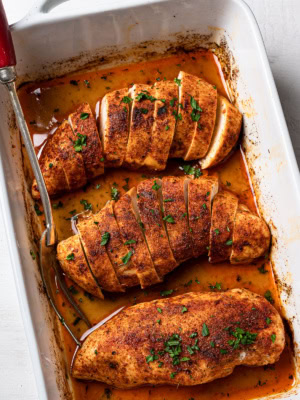
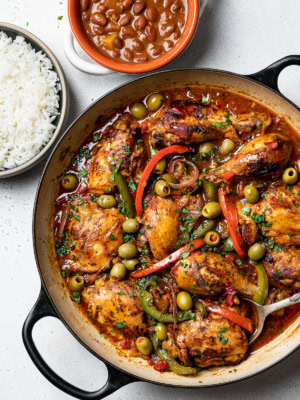

Join the Conversation